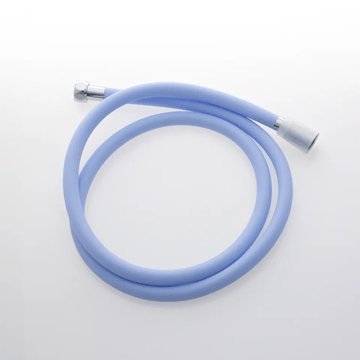Silicone vs Rubber: What’s the Difference?
Silicone and rubber hoses are two of the most popular kinds of plumbing pipes used in various industries. They are both durable materials that have great flexibility and are resistant to high temperatures, chemicals, and UV degradation. Despite the similarities, there are fundamental differences between the two materials that users need to know.
The Composition of Silicone and Rubber
Silicone is a synthetic compound made up of silicon, carbon, hydrogen, oxygen, and sometimes other chemicals. It is a polymer that is formed by a unique cross-linking process that creates a stable and durable material with high resistance to extreme temperatures.
Rubber, on the other hand, is a natural or synthetic compound made up of various organic molecules, mainly carbon and hydrogen. The polymerization process of rubber is different from that of silicone.
The Physical Appearance of Silicone and Rubber Hoses
Silicone hoses are smooth, glossy, and have a distinctive bright blue or red color tone. They are also more flexible than rubber hoses and have a higher tensile strength. In contrast, rubber hoses have a coarse texture, are dark-colored, and can feel stiff at times.
The Temperature Tolerance of Silicone and Rubber Hoses
Silicone hoses can withstand a broad range of temperatures of up to 500°F (260°C). This makes them suitable for use in high-temperature applications such as radiator hoses, turbocharger hoses, and heater hoses. Rubber hoses, on the other hand, have a lower temperature tolerance of up to 212°F (100°C) and are ideal for uses such as vacuum hoses, windshield washer tubing, and fuel lines.
The Chemical Resistance of Silicone and Rubber Hoses
Silicone hoses are resistant to most chemicals, which is why they are commonly used in pharmaceutical and medical industries, food processing, and marine applications. Rubber hoses are also chemical resistant but may not be as durable as silicone hoses when exposed to harsh chemicals and fuels.
The Life Expectancy of Silicone and Rubber Hoses
Silicone hoses have a longer lifespan than rubber hoses because of their ability to maintain strength and flexibility under harsh conditions. They are resistant to ozone and UV radiation that can cause rubber hoses to break down over time. Therefore, they do not crack, dry out, or get brittle as rubber hoses do.
The Benefits of Silicone and Rubber Hoses
Silicone hoses have a smooth interior that allows for unimpeded flow and improved performance. They are also lighter in weight than rubber hoses and offer greater flexibility, making them easier to install and maintain. Rubber hoses, on the other hand, are economical and readily available.
The Cost Comparison of Silicone and Rubber Hoses
Silicone hoses are generally more expensive than rubber hoses. The manufacturing process is more complex, and the material itself is more durable. Rubber hoses are widely available, cheaper, and ideal for low-pressure applications that do not require high-temperature resistance.
When to Use Silicone vs Rubber Hoses
Silicone hoses are excellent for use in high-performance and high-temperature applications, such as in motorsports, aerospace, and marine industries, where reliability and durability are paramount. Rubber hoses are more suitable for low-pressure and low-temperature applications, such as those found in domestic heating systems, automotive brake systems, and industrial water pumping systems.
The Bottom Line
In conclusion, the main differences between silicone and rubber hoses come down to their respective physical and chemical properties. Silicone hoses are more expensive but durable, flexible, and resistant to high temperatures and chemicals. Rubber hoses are cheaper, readily available, and suitable for low-pressure and low-temperature applications.
Quote Inquiry
Contact Us Now!

